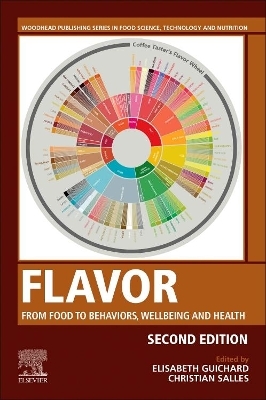
Flavor
Woodhead Publishing (Verlag)
978-0-323-89903-1 (ISBN)
Broken into four parts, the first begins with coverage of flavor release in humans. Part two addresses flavor perception, from molecules to receptors and brain integration. Part three analyzes flavor perception, preferences and food intake. Finally, part four considers flavor perception and physiological status.
Academics working in the areas of sensory science, food quality, nutrition and human sciences, as well as research and development professionals and nutritionists, will benefit from this important revised reference.
Elisabeth Guichard is recognised as an expert in flavour analysis by the scientific community as demonstrated by her publications in peer review Journals (180) mainly in Food Science, her active participation as oral speaker (130) or by poster presentation (123) in the most famous congresses in the field and her position as associate editor in Flavour and Fragrance Journal. She is editor of 8 books and author of 72 book chapters. She developed innovative methodologies to better understand the interactions between aroma compounds and macromolecules at the molecular level in the aim to predict aroma release from food matrix taking into account their initial composition. Since 2008, E. Guichard focused her research on the dynamic release of aroma compounds during food consumption by human subjects differing in their oral physiology and its impact on dynamic sensory perception. She also studied odor-taste associations to restore taste perception in low salt/sugar/fat products. Christian Salles is research director at INRAE. His main research field carries on in-mouth mechanisms leading to flavour release and perception with in vivo and in vitro approaches. He coordinated the development of chewing simulators dedicated to in vitro approaches of temporal flavour release and food breakdown studies in controlled eating conditions. He has coordinated several projects related to the reduction of salt content in food and in particular a European project (TeRiFiQ – from 1/2012 to 12/2015) on the reduction of salt, fat and sugar in food, with 17 European partners including 11 SMEs. These last years, he focused his research on the temporal release of sodium according to food matrix composition and oral condition. He is the author of 80 publications in peer-reviewed journals, 117 communications in scientific congresses (oral and poster) and the author of 53 book chapters. He is the editor of 2 books.
Part one: Flavor release in Humans 1. Modulation of flavour release and perception by food matrix composition and structure 2. Dynamic methods to link flavor release and flavor perception 3. How amniotic fluid shapes early odor-guided responses to colostrum and milk (and more) 4. In-mouth metabolism of flavour compounds
Part two: Flavor perception, from molecule to receptor and brain integration 5. Taste perception and integration 6. Olfactory function of nasal odorant metabolism 7. Olfactory perception and integration 8. Multimodal integration 9. Brain processing 10. Holistic perception and memorization of flavor
Part three: Flavor perception, preferences and food intake 11. Learning of human flavor preferences 12. Relationships between early flavor/texture exposure, and food acceptability and neophobia 13. Flavor perception and satiation 14. Familiarity, monotony, or variety: The role of flavour complexity in food intake
Part four: Flavor perception and physiological status 15. Metabolic status and olfactory function 16. Taste disorders in disease including COVID 17. Olfactory disorders and consequences 18. Relationship between oral microbiota and flavour perception
| Erscheinungsdatum | 25.08.2022 |
|---|---|
| Sprache | englisch |
| Maße | 152 x 229 mm |
| Gewicht | 1000 g |
| Themenwelt | Technik ► Lebensmitteltechnologie |
| ISBN-10 | 0-323-89903-X / 032389903X |
| ISBN-13 | 978-0-323-89903-1 / 9780323899031 |
| Zustand | Neuware |
| Haben Sie eine Frage zum Produkt? |
aus dem Bereich


